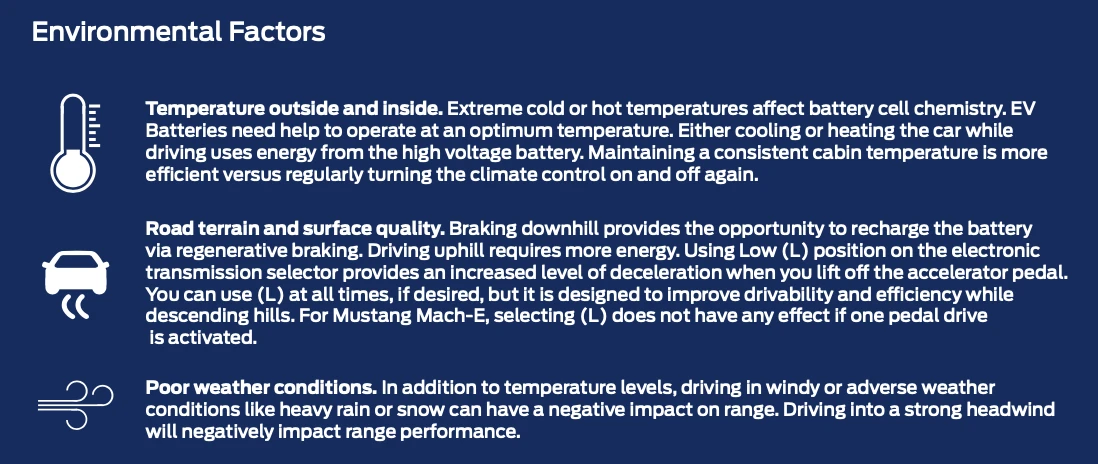Vans and trucks for sale
Electric & Hybrid
Information Hub
Servicing
Locations
Offers
Vans and trucks for sale
Electric & Hybrid
Information Hub
Servicing
Locations
Offers

WHAT YOU NEED TO KNOW
The Worldwide Harmonised Light Vehicle Test (WLTP) procedure is used to measure fuel consumption and CO2 emissions and is designed to represent everyday driving. It was launched in Europe in 2017 and better reflects on-the- road performance compared to the NEDC test procedure. It is designed to enable comparisons to be drawn between different vehicles which are tested under the same controlled test conditions. The test covers different driving styles with different average speeds. Importantly, the ambient temperature used in the testing is a consistent 23C.
For our EVs we also display the WLTP Extra High test value which reflects the less efficient scenario of motorway driving. This better illustrates the variability in real-world driving on a Mustang Mach-E or Kuga PHEV. This follows updated guidance from the Vehicle Certification Agency in the UK.
| Model | Derivative | WLTP Extra High (Motorway) | WLTP Overall |
|---|---|---|---|
| Mustang Mach-E | RWD Standard Range | 202 miles / 326 km | 273 miles / 440 km |
| RWD Extended Range | 280 miles / 452 km | 379 miles / 610 km | |
| AWD Extended Range | 253 miles / 408 km | 335 miles / 540 km | |
| GT | 236 miles / 380 km | 310 miles / 500 km | |
| Kuga PHEV | ST-Line Edition | 28 miles / 46 km | 39 miles / 63 km |
| ST-Line X Edition | 28 miles / 45 km | 37 miles / 61 km | |
| Vignale | 28 miles / 45 km | 37 miles / 61 km |
The WLTP test is performed in controlled test conditions to provide customers the ability to see a like-for-like comparison. In the real world, as with petrol or diesel vehicles, there are multiple factors that influence and impact range performance:
There are several steps that can be taken to maximise your all-electric range:
Pre-conditioning the battery and cabin: Set departure times to warm the battery and prepare the cabin while plugged in to a charging source. Managed via SYNC or FordPass.
Keep the vehicle plugged in whenever it is parked. In colder weather, parking under cover can be helpful.
Regenerative braking can capture and reuse more than 90% of the braking energy improving the efficiency of the battery and extending the battery range.
Maintaining a consistent cabin temperature is more efficient versus regularly turning the climate control on and off again.
Temperature outside and inside. Extreme cold or hot temperatures affect battery cell chemistry. EV Batteries need help to operate at an optimum temperature. Either cooling or heating the car while driving uses energy from the high voltage battery. Maintaining a consistent cabin temperature is more efficient versus regularly turning the climate control on and off again.
Road terrain and surface quality. Braking downhill provides the opportunity to recharge the battery via regenerative braking. Driving uphill requires more energy. Using Low (L) position on the electronic transmission selector provides an increased level of deceleration when you lift off the accelerator pedal. You can use (L) at all times, if desired, but it is designed to improve drivability and efficiency while descending hills. For Mustang Mach-E, selecting (L) does not have any effect if one pedal drive is activated.
Poor weather conditions. In addition to temperature levels, driving in windy or adverse weather conditions like heavy rain or snow can have a negative impact on range. Driving into a strong headwind will negatively impact range performance.

.jpg.webp)
.jpg.webp)

